On the Road is a weekday feature spotlighting reader photo submissions.
From the exotic to the familiar, whether you’re traveling or in your own backyard, we would love to see the world through your eyes.
I have so enjoyed Spring in Flyover Country! Not just the extraordinary photography that we have come to expect from Albatrossity, but also the stories. So many delightful stories! I have loved reading them and learning about these gorgeous birds. We’re not at the end of Spring in Flyover Country just yet, but I can see from Abatrossity’s descriptions that we’re heading toward the end of this particular road. There will be one more Spring in Flyover Country after today, and then it will be a long wait until next spring! ~WaterGirl
Albatrossity
Winding down now, just one migrant in this batch, and lots of summer-resident birds. Some of them are pretty fine, however!
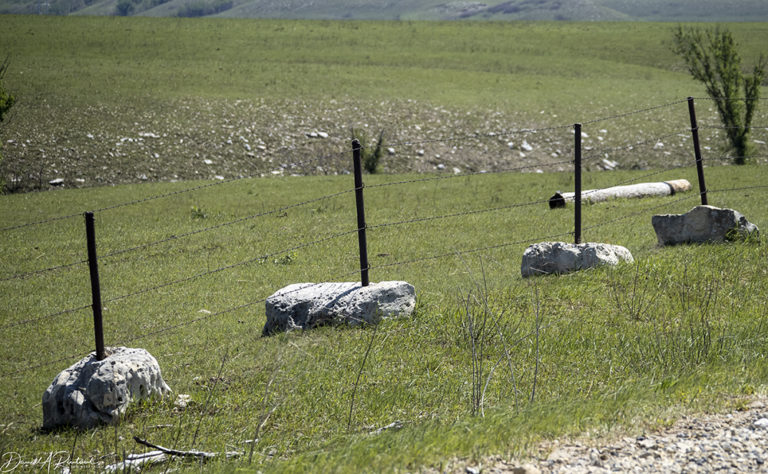
Here’s a shot of the fence-posts in a pasture south of town. One may wonder why the fence-posts seem to have been implanted in limestone boulders. But the reason lies, once again, in a fact that explains why our local native prairies are still intact rather than planted to row crops. The soil on this hilltop is too thin to allow a post-hole to be dug; the limestone bedrock is probably 2-4 inches below the surface And 2-4 inches is not deep enough to anchor a post that your cattle will be pushing against. So the ingenious solution was to drag some of the ubiquitous limestone boulders to the top of the hill, space them out, drill holes in them, and plant the fence-posts in the holes. Even in the most robust Kansas tornado, these posts aren’t going anywhere.
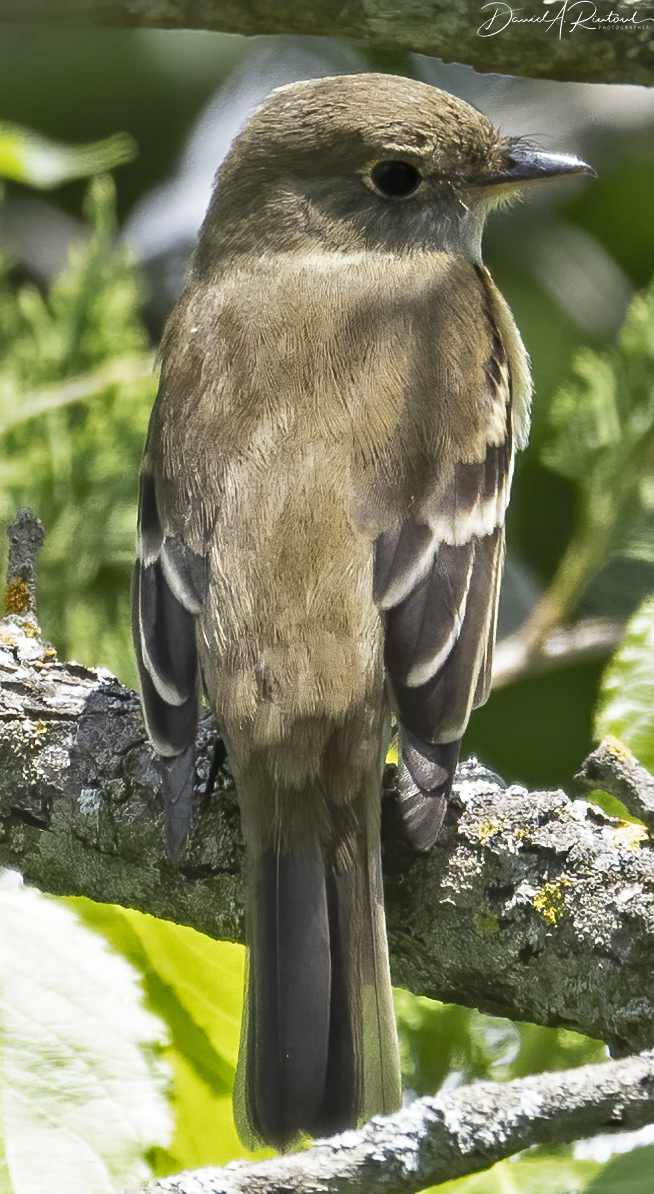
Here’s the sole migrant passerine bird I saw this week (third week of May). It’s one of those pesky Empidonax flycatchers, that are hard to ID from a picture and just about as hard to ID when you have them in your hand. From the picture we can reduce the possibilities to two: Alder Flycatcher or Willow Flycatcher. Interestingly these two current species were formerly lumped into one – Traill’s Flycatcher. The calls and songs are the only definitive discriminating trait, and fortunately I heard this one call. It’s a Willow Flycatcher (Empidonax trailli), which has been recorded sporadically as a breeding species in northeastern Kansas (including the county just to the north of me), but this one is probably headed out of town for the summer.
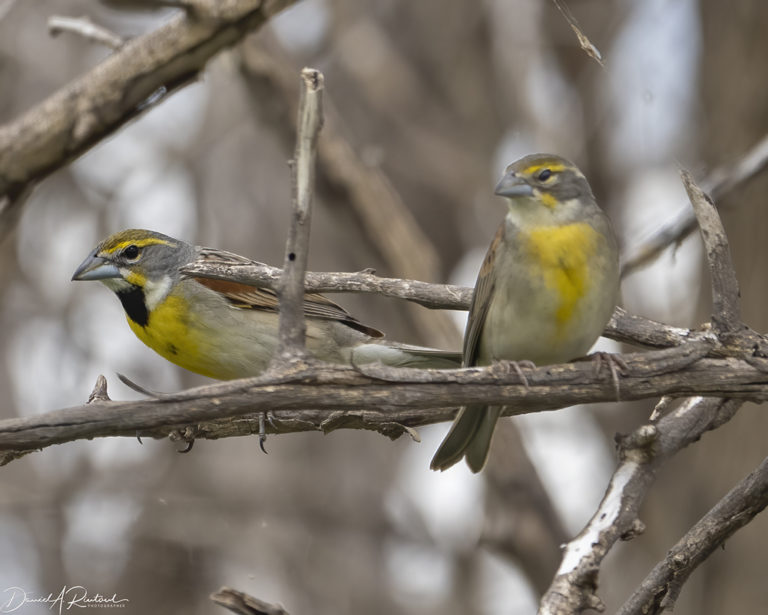
The most vocally obvious bird in this part of flyover country is the Dickcissel. A bird that prefers old fields and shrubby pastures, it is everywhere. If you can’t find a Dickcissel here at this time of year, you are legally deaf and blind. Here’s a newlywed couple, Mr and Mrs Dick Cissel, thinking about the eggs back in their nest, no doubt. When they flew off, they were followed by two other members of the wedding party: a couple of female Brown-headed Cowbirds who were also thinking of putting their eggs in that nest.
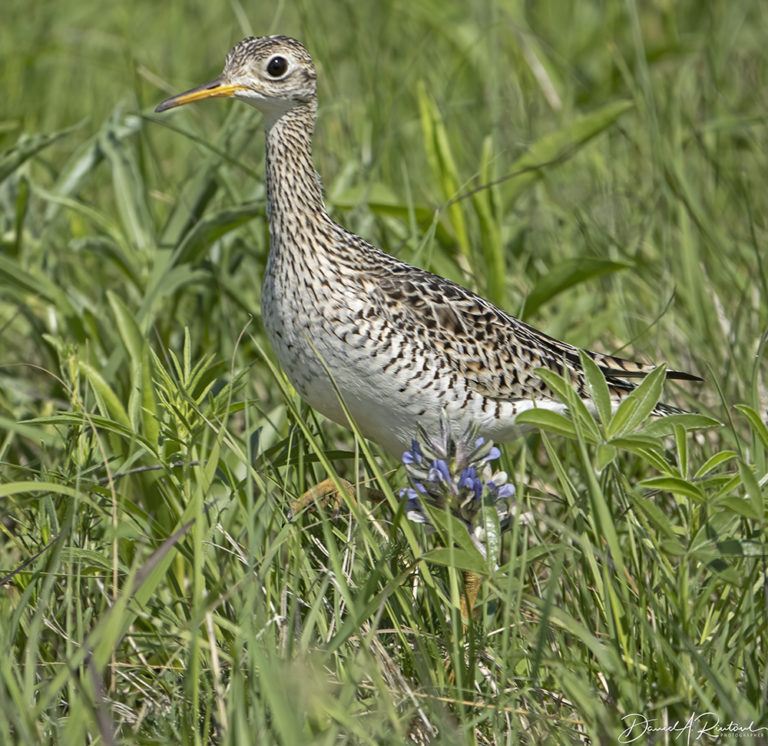
Our local tallgrass prairie hosts lots of Upland Sandpipers every summer as well. One of the few trans-equatorial migrants in North America, these birds spend the austral summer in the pampas of South America and the boreal summer in grasslands in North America. Researchers at KSU have trapped and transmittered some of these birds, and their migratory path is amazing. See the maps here .
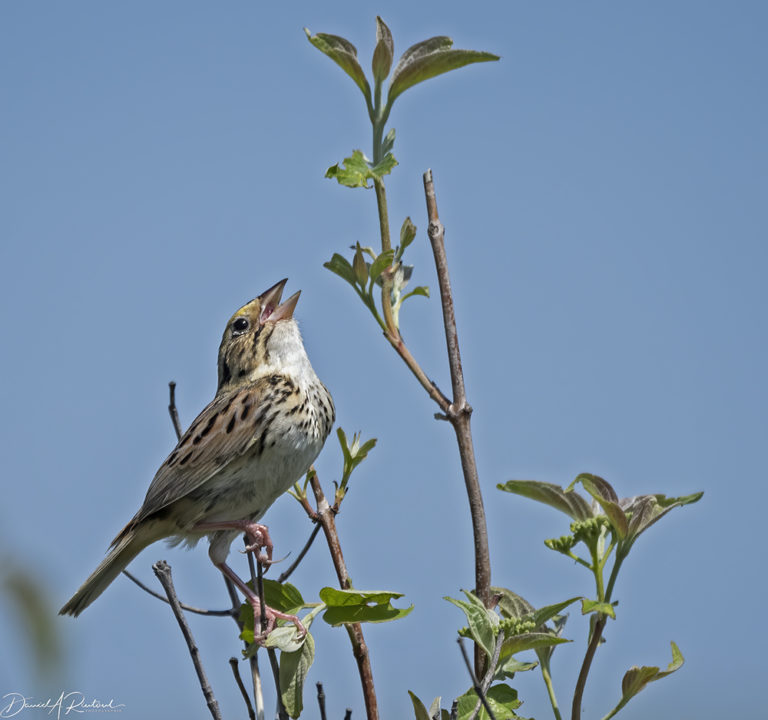
Another prairie specialist, but one that is a lot less common, is the Henslow’s Sparrow. This species needs prairies with lots of last year’s grasses (the standing dead) before it is comfortable settling down and making a nest. It skulks through those dead grasses, only emerging on calm mornings to sing a bizarre song that resembles a hiccup. Here’s a link to a video of this guy singing.
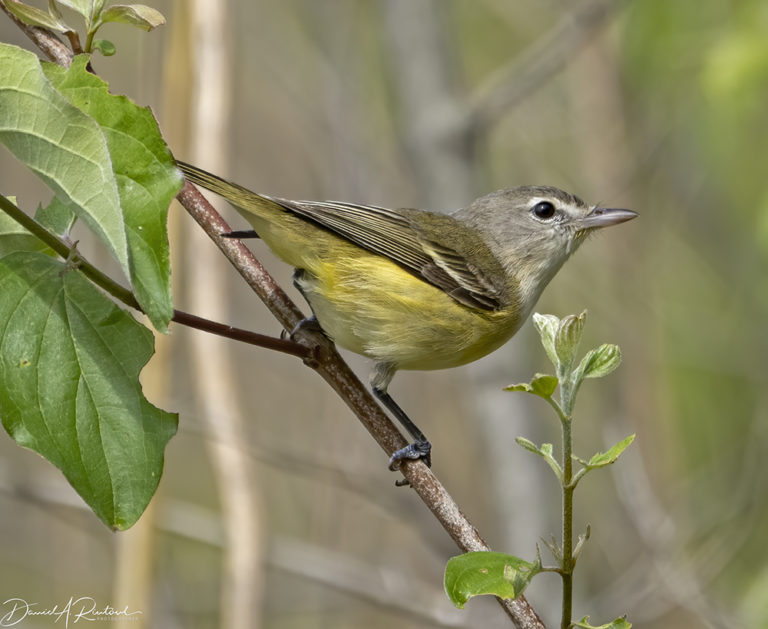
Bell’s Vireos are also quite obvious vocalists if you are in the right habitat, dogwood or other shrubs in grasslands. Like their forest counterpart, the Red-eyed Vireo, these guys sing loud and continuously even in the heat of a summer mid-day.
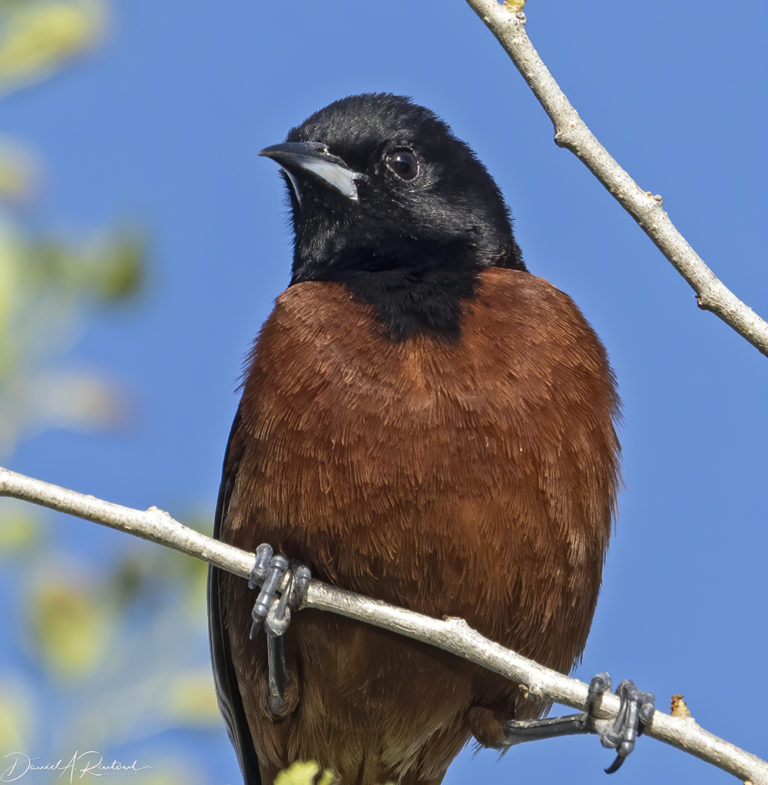
Orchard Orioles are a bit unusual in that the first-year males look very different from males in older age classes. So here is an older Orchard Oriole male, with that brick-red body and black head. He is an excellent songster as well; video here.
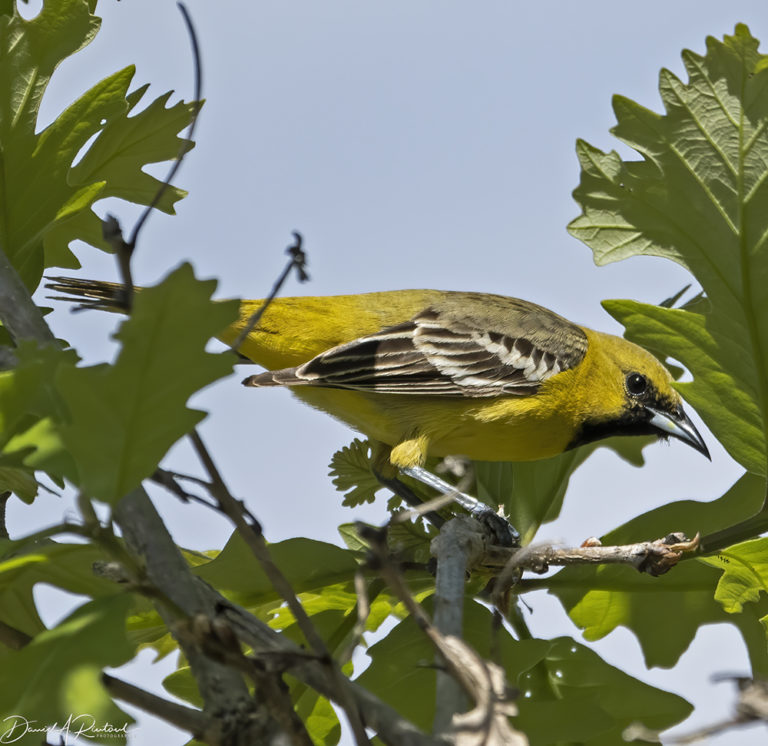
This is a first-year male Orchard Oriole, hatched last summer. Not brick-red at all, but yellow. No black head, but a very dark black throat patch. And song-wise he is indistinguishable from an older male, so presumably he will attract a female looking for a younger guy.

JAFD
Thanks for showing us some of the wonder of our world.
?BillinGlendaleCA
Regarding you last pic, I saw a yellow colored bird from my door one afternoon and was determined(even with my crappy telephoto lens) to get a pic. So I sat out in my yard the next evening and shot pics of birds and got pic of that yellow bird and was surprised(checking the San Fernando Valley bird ID) it was a male Hooded Oriole. I didn’t realize we had them in LA and always thought an Oriole was red.
JPL
Wonderful! Thank you especially for the links to their calls.
Rob
As always, I love these photos!
Mary G
The Upland Sandpiper study is fascinating; really appreciate the link. Sad to know these posts are almost finished.
evodevo
Thanks for the bird songs – that is helpful…can’t identify them without that because they remain hidden in the foliage.
Regarding the fence posts, that is the way it is here in much of northern Ky…where our farm is, there is usually ledge rock a foot down, and a secure fence post needs to be two feet at least. Even a tractor driven auger won’t work. The old timers blasted a fence line with dynamite, but nowadays a lot of them use post drivers and even that isn’t a solution for some post positions in the line. Interesting to see the Kansas way, but drilling through rock doesn’t sound pleasant…
Albatrossity
@?BillinGlendaleCA: Yeah, you should regularly see Hooded Orioles, Bullock’s Orioles, and Scott’s Orioles in your part of the world. The Bullocks looks a lot like our Baltimore Orioles here, and the male will be orangey (females more yellow), but the other two are often lemon-yellow regardless of the sex of the bird. We had a vagrant Hooded Oriole here in Manhattan KS once, and it caused quite a commotion amongst the local birders!
@evodevo: That dynamite thing sounds impressive! Your bedrock may be harder than the limestone we have here, so dynamite might be a better solution than drilling the rock. Limestone is much easier to drill than most rocks, and there are lots of limestone quarries here where the first step is to drill a hole in the rock so that you can place a stick of dynamite into it!
arrieve
Wonderful pictures as always. I especially love the dickcissels.
Albatrossity
@Mary G: I agree, Upland Sandpipers are amazing birds. Coincidentally my Bird of the Day tweet is another Upland Sandpiper today.
MelissaM
I know you have great cameras, use fancy lenses and all, but to me it’s just magic that you get these shots!
I liked that you named the pair the Dick Cissels. Every pair of cardinals I see are Claude and Claudia Cardinale.
Also Dickcissel. Bwa ha ha ha ha!
MazeDancer
Beautiful pics, Albatrossity!
WaterGirl
@Mary G: Spring in Flyover Country is almost finished; the last one is next week.
But we’ll still have Albatrossity! He has photos from New Zealand, for instance, and wildlife photos from other exotic places.
Miss Bianca
It’s funny – I used to skip over OTR sometimes back in the Before Times. But never again, now. Thanks, Albatrossity – you and Billin and some of the other great photographers here have inspired me to just start taking pictures.
I never used to do many because I am a crap photographer. Then I realized that I’ll just never get any better till I *commit* to taking *tons* of crap photographs! Here’s to it – cheers!
WaterGirl
@Miss Bianca: You sound like the perfect candidate for First Timers week! It starts on June 22 and goes for two weeks.
We only have one First Timer submission so far, so there are 9 slots left!
wdac
I don’t understand the Kansas fence installation. If a hole has to be drilled into the limestone boulder to hold the post, why not just drill a hole into the limestone bedrock 2″ – 4″ below the surface and save hauling and placing thousands of boulders?
Albatrossity
@wdac: Beats me! I just report what I was told by a rancher.
J R in WV
@wdac:
Just a WAG. but the boulders may well be softer and easier to drill into than the bedrock underground. Drilling into bedrock is HARD in any case, and the boulders have had time to soften up
outside of above the the ground. To know for sure we would have to ask the farmers who built the fence back in the day…OT detail: after someone invented barbed wire fencing, and patented his wire pattern, suddenly every wire factory did their own new pattern for barbs, and there were hundreds (or thousands) of different barbed-wire. So, of course, people collect all those different types of bob-wire. The rarer forms can be expensive!!! And collections go to community farm life museums, esp in the midwest.
Albatrossity
@J R in WV: There is a barbed wire museum in Lacrosse KS, if you are ever out this way. Some very interesting variations on the theme there!
Albatrossity
@wdac: Another WAG. It might be easier to set up a drill at a central location on a ranchstead and drill holes in a bunch of rocks there, rather than drag the drill all over the hills to drill holes in the bedrock in the ground. Boulders are probably easier to transport to the site than a big old drill, and the power for it, would be.